
The Bicol Region, commonly shortened to Bicol and designated as Region V, is an administrative region of the Philippines. Also referred to as Bicolandia, it comprises six provinces, four on the Bicol Peninsula : Albay, Camarines Norte, Camarines Sur, and Sorsogon, and two off the shore: Catanduanes and Masbate.

Camarines Sur, officially the Province of Camarines Sur, is a province in the Philippines located in the Bicol Region on Luzon. Its capital is Pili and the province borders Camarines Norte and Quezon to the northwest, and Albay to the south. To the east lies the island province of Catanduanes across the Maqueda Channel.
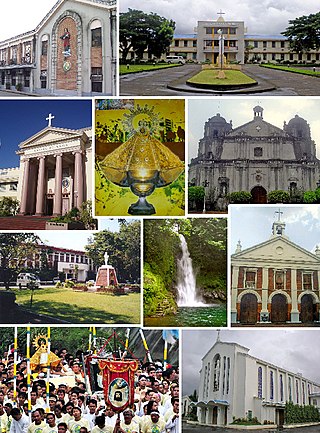
Naga, officially the City of Naga, or the Pilgrim City of Naga, is a 1st class independent component city in the Bicol Region of the Philippines. According to the 2020 census, it has a population of 209,170 people.
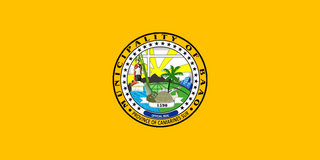
Baao, officially the Municipality of Baao is 1st class municipality in the province of Camarines Sur, Philippines. According to the 2020 census, it has a population of 61,493 people.

Calabanga, officially the Municipality of Calabanga, is a 1st class municipality in the province of Camarines Sur, Philippines. According to the 2020 census, it has a population of 88,906 people.

Canaman, officially the Municipality of Canaman is a 3rd class municipality in the province of Camarines Sur, Philippines. According to the 2020 census, it has a population of 36,205 people. Canaman is known for its upscale shopping, heritage which dates back to Spanish era, and its new first class housings.

Goa, officially the Municipality of Goa, is a 1st class municipality in the province of Camarines Sur, Philippines. According to the 2020 census, it has a population of 71,368 people.

Pasacao, officially the Municipality of Pasacao, is a 1st class municipality in the province of Camarines Sur, Philippines. According to the 2020 census, it has a population of 53,461 people.

Pili, officially the Municipality of Pili is a 1st class municipality and capital of the province of Camarines Sur, Philippines. According to the 2020 census, it has a population of 99,196 people.
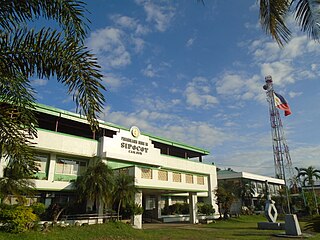
Sipocot, officially the Municipality of Sipocot, is a 1st class municipality in the province of Camarines Sur, Philippines. According to the 2020 census, it has a population of 68,169 people.
Partido State University is a research regional state higher education institution in Partido Area at the province of Camarines Sur, Philippines. It is an ISO 9001:2015 certified public university.

Metropolitan Naga was a metropolitan area in the Bicol Region of the Philippines that consisted of the city of Naga and its 14 neighboring municipalities in Camarines Sur. The metropolitan area, which was managed by the Metro Naga Development Council, also included Pili, the capital of the Camarines Sur, and covered most of the 3rd district of the province and part of its 1st, 2nd, 4th and 5th districts. Metro Naga comprised about 40% of the total population of the province, while covering 22.9% of the province in area.
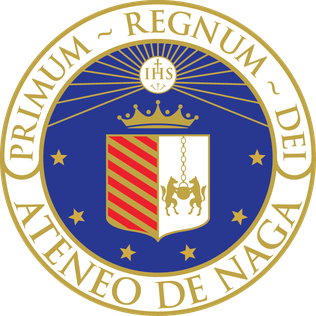
The Ateneo de Naga University, also referred to by its acronym AdNU, is a private Catholic Jesuit basic and higher education institution run by the Philippine Province of the Society of Jesus in Naga City, Camarines Sur, Philippines. It was established in 1940 when the Jesuits took over the administration of the diocesan school, Camarines Sur Catholic Academy. The Jesuits renamed the school Ateneo de Naga after taking control. The Jesuits were naming all the schools that they were opening at that time Ateneo. Ateneo de Naga was the fourth school named Ateneo by the Jesuits. Typical of universities in the Philippines, AdNU has primary and secondary departments, which are both coeducational.

The Naga City Science High School is a secondary public science high school system located in Leon SA Aureus St., Gimenez Park Subdivision, Balatas, Naga City, Camarines Sur, Philippines. It is a DepEd-recognized Science High School. The principal is Erwin Delos Reyes.

The Polytechnic State University of Bicol (PSUB) is a state university in Nabua, Camarines Sur, Philippines. It is mandated primarily to provide higher technological, professional and vocational instruction and training in fisheries, trade, as well as short term technical and vocational courses, as the Board of Trustees may deem necessary, and shall promote research in the exploration and conservation of natural resources in the province. Its main campus is located in Nabua, Camarines Sur.
Polangui General Comprehensive High School (PGCHS) is the flagship secondary school of the municipality of Polangui in the province of Albay. It has an average population of 4,000 students. PGCHS has seven present curricula. It is located along the Buhi-Polangui Road at Purok Earth, Centro Occidental, Polangui, Albay; having a total service area of 48,708 square meters. It is 39.1 kilometers away from the Department of Education (DepEd) Albay Division Office.

Holy Rosary Minor Seminary is a Roman Catholic seminary or a house of formation for high school and college would-be priests run by the Archdiocese of Caceres in Naga City, in the Philippines.
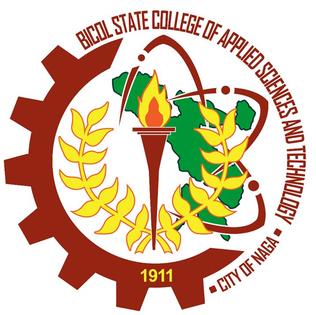
The Southeast Asian University of Technology (SEAUTech), formerly known as the Bicol State College of Applied Sciences and Technology (BISCAST), is a nonsectarian public state college in the Philippines. It is located along Peñafrancia Avenue in Naga City. The current president is Alex H. Navarroza.

The Central Bicol State University of Agriculture, or simply referred to by its acronym CBSUA, is a state university in the province of Camarines Sur, Philippines, and is the regional center for higher learning in agriculture in the Bicol Region.

Gabriel Hidalgo Bordado Jr., also known as Gabby Bordado Jr., is a Philippine politician and writer who is serving as the Representative for Camarines Sur's 3rd congressional district.





























